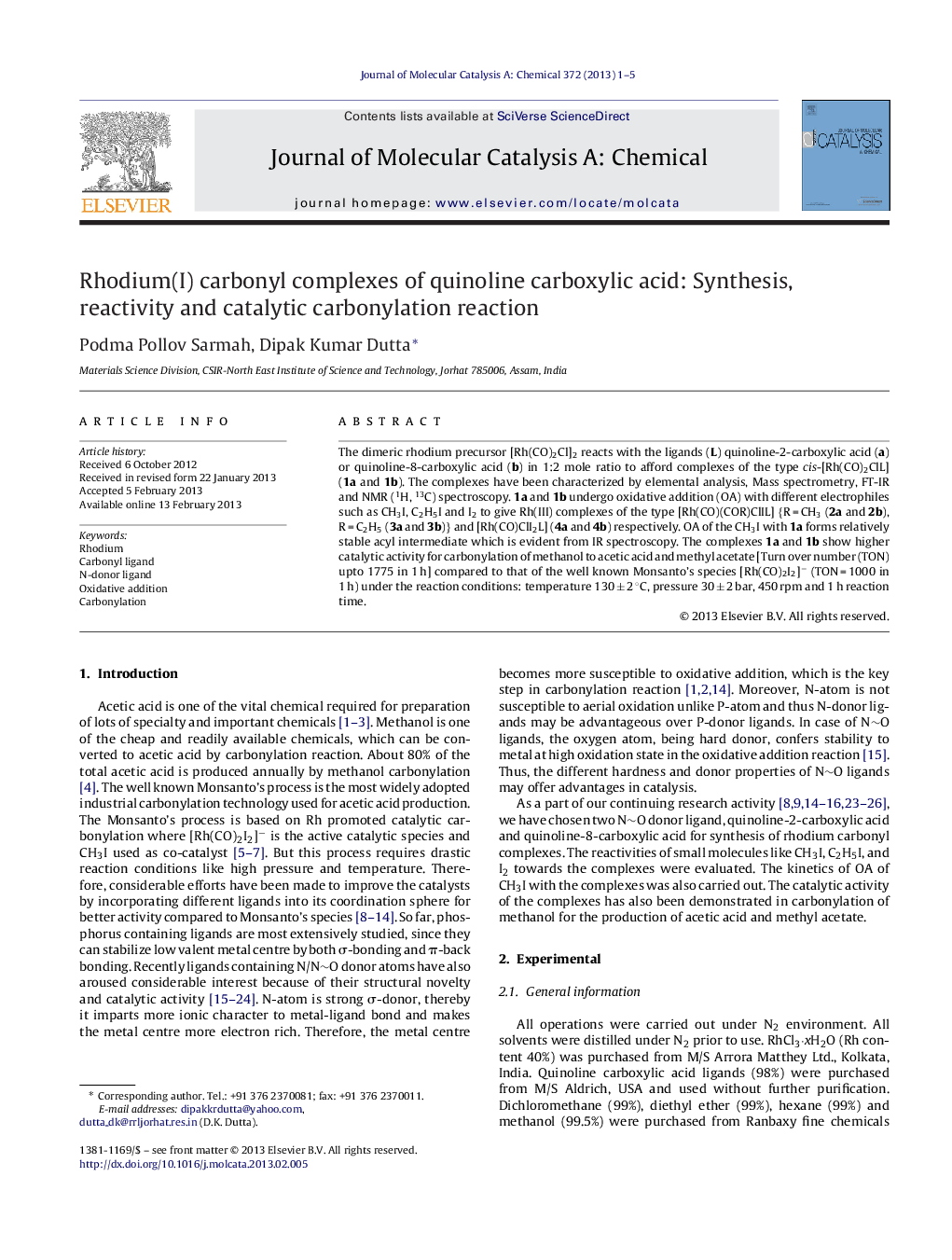| Article ID | Journal | Published Year | Pages | File Type |
|---|---|---|---|---|
| 65806 | Journal of Molecular Catalysis A: Chemical | 2013 | 5 Pages |
The dimeric rhodium precursor [Rh(CO)2Cl]2 reacts with the ligands (L) quinoline-2-carboxylic acid (a) or quinoline-8-carboxylic acid (b) in 1:2 mole ratio to afford complexes of the type cis-[Rh(CO)2ClL] (1a and 1b). The complexes have been characterized by elemental analysis, Mass spectrometry, FT-IR and NMR (1H, 13C) spectroscopy. 1a and 1b undergo oxidative addition (OA) with different electrophiles such as CH3I, C2H5I and I2 to give Rh(III) complexes of the type [Rh(CO)(COR)ClIL] {R = CH3 (2a and 2b), R = C2H5 (3a and 3b)} and [Rh(CO)ClI2L] (4a and 4b) respectively. OA of the CH3I with 1a forms relatively stable acyl intermediate which is evident from IR spectroscopy. The complexes 1a and 1b show higher catalytic activity for carbonylation of methanol to acetic acid and methyl acetate [Turn over number (TON) upto 1775 in 1 h] compared to that of the well known Monsanto's species [Rh(CO)2I2]− (TON = 1000 in 1 h) under the reaction conditions: temperature 130 ± 2 °C, pressure 30 ± 2 bar, 450 rpm and 1 h reaction time.
Graphical abstractFigure optionsDownload full-size imageDownload high-quality image (109 K)Download as PowerPoint slideHighlights► Two new rhodium dicarbonyl complexes of quinoline carboxylic acid were synthesized. ► Activation of small molecules like CH3I, C2H5I etc. was studied with the complexes. ► Kinetics of oxidative addition of CH3I with synthesized complexes has been studied. ► Catalytic efficiency of the complexes in carbonylation reaction was evaluated.
